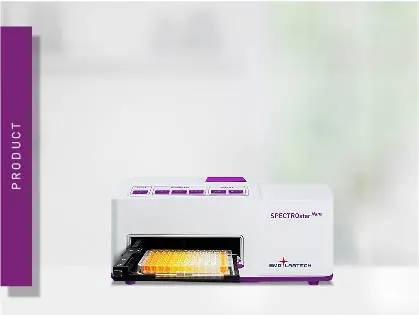
SPECTROstar Nano
Absorbance plate reader with cuvette port
These are the different kinetic modes on BMG LABTECH microplate readers.
 Dr EJ Dell
Dr EJ Dell
Endpoint mode experiments measure each well of the microplate only once. Example assays are ELISAs, DNA and protein concentration determination, steady-state dose response curves, ADP-Glo™ (Promega), Transcreener™ GDP fluorescent polarization (Bellbrooks labs), et al.
Absorbance plate reader with cuvette port
Powerful and most sensitive HTS plate reader
Most flexible Plate Reader for Assay Development
Upgradeable single and multi-mode microplate reader series
Filter-based multi-mode microplate reader
The Z prime value (Z’) is a statistical parameter that can provide practicable information on the quality of an assay. This blog looks at its usage and describes some examples of specific applications.
Optical density and absorbance measurements are widely used in the life sciences. This blog looks at practical applications and some of the fundamentals.
Researchers have different technology options available for absorbance measurements. This blog compares spectrometers and monochromators. What’s the difference?
ELISAs are a popular tool to detect or measure biological molecules in the life sciences. Find out how microplate readers can be used to advance research using immunoassays.
LanthaScreen is a TR-FRET technology which can be used to measure kinase activity, compound binding, and post-translation modification events. Read more about this type of assay here.
Although the concept of fluorescence gain has always been hard to grasp, it is a make-or-break parameter in microplate reading. Read here how to adjust it optimally.